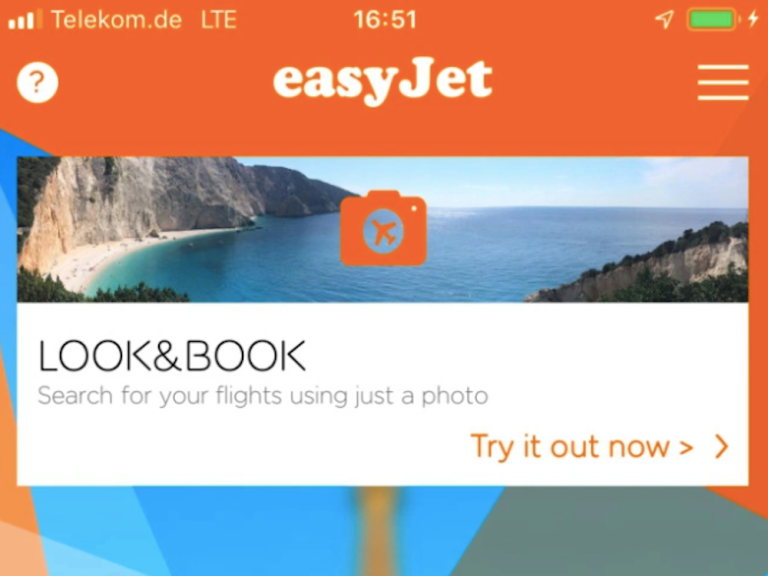easyJet’s New Instagram Booking Takes Off

Social media is a terrific breeding ground for travel envy — there is no faster way to find yourself wishing you were in a more exotic, warmer and more pleasant climate than to view someone else’s social media images of already being there.
And among the social sites, Instagram, with its photo-centric orientation, has ben a particularly powerful influencer in the travel segment — and “Instagram tourism” has become a demonstrable phenomenon. Demonstrable, and occasionally annoying. In 2016 China opened the world’s highest and longest glass platform. It manage to keep it open for less than two weeks (13 days to be exact) when hoards of camera-toting tourists flocked to the location to grab that perfect shot.
It is undeniable by the numbers that Instagram is a a major mover in the travel segment. Trolltunga, a mountain cliff that juts out over Odda, Norway’s Lake Ringedalsvatnet, used to have about 400 visitors a year. In 2016 in had over 50,000, according to National Geographic. Wanaka, New Zealand, a small mountain town, realized that it too had some very scenic vistas, and decided to invite “influencers” to come see them. Net result: tourism to Wanaka increased 14 percent.
On average, users of Instagram engage with it 10 times more often than they do with Facebook. In light of that, it isn’t much of a surprise that 48.8 percent of brands in the United States are on Instagram, or that by most estimates that figure will grow as high as 70.7 percent.
“Now you’re less than 10 clicks away from seeing an image on Instagram to purchasing a ticket to go there,” says Chris Burkard (@chrisburkard), a photographer with more than 2 million Instagram followers. “I’ve met people who have traveled to places because of my photographs, and I don’t mean that in an egotistical way … [That] wasn’t happening 10 years ago.”
And for the folks at easyJet, Europe’s largest discount airline, that change is apparent — as is a problem. Ten clicks is way too many clicks.
“When we were looking at how people use Instagram, it quickly became apparent that as people look through Instagram at nice photos, there was no way of turning that into a transaction,” said Daniel Young, easyJet’s head of digital experience.
What easyJet has long wanted, Youngs says — and what it has even explicitly asked for in the past from the likes of Snapchat and Facebook — is a feature that makes it easy to see the picture and book a flight to the destination featured. The problem, Young said, is that “buying a holiday is a lot more complex than buying a T-shirt,” and building that desired functionality was riddled with issues.
Or it was, anyway — the European airline has now built a visual search tool to make it single-tap easy to see a picture, and book a flight to that location. According to Young, the consumer does not even necessarily need to know where the photo they are seeing was taken.
The feature is called “Look&Book” and it leverages image-recognition technology to match a photo of a location from anywhere in Europe with one of easyJet’s service locations. Moreover, once the user clicks on the image, Look&Book also allows users to see the nearest airport, and pre-populates the booking form in the app with those details. The feature will also soon include destinations from outside of Europe as easyJet services them.
The feature is structured to give easyJet the best of both worlds, in tapping into the Instagram platform, while still leading users back to the easyJet mobile platform.
“Although there’s been plenty buzz in the visual search space this year already, easyJet has gotten ahead of the curve by connecting the dots back into their own ecosystem,” Gracie Page, innovation lead at VMLY&R, told Digiday. “As consumer devices become increasingly more sophisticated and able to handle complex computational processes, we’re just getting started with the delight that will be the visual search paradigm.”
For easyJet, though, the goal is even more basic, according to Young: the airline is making a move to bring the contextual commerce movement into travel in a way that hasn’t been possible in the past.